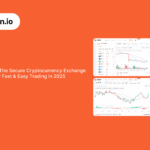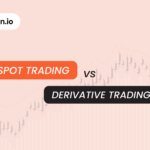If you’ve spent more than five minutes reading about crypto, you’ve heard this question a hundred times: “When is the best time to invest in crypto?” Forums are full of it. Your Telegram groups argue about it every week. Even seasoned traders still debate it, sometimes out loud, sometimes in their heads. The market moves 24/7. Prices spike and crash, sometimes on the same day. So when is the perfect moment to jump in?
Let’s get real. There’s no magic answer. But you can unpack what actually goes on in these markets, see what the experts and data say, and get a grip on how timing plays out in the wild world of crypto investing. Here’s what you need to know.
Crypto Runs 24/7: Timing Works Differently Here
Unlike traditional stocks, crypto never sleeps. You can buy or sell Bitcoin on Sunday at 3 am just as easily as you can on Monday at noon. The market’s always open, always moving. That alone changes how you think about timing.
Stocks follow Wall Street’s clock. Crypto makes its own rules. Still, some traders notice price patterns at certain times of day, week, or month. More on that in a minute.
But first, let’s tackle the real elephant in the room: volatility.
Crypto Volatility
Crypto can make your heart race. Massive swings, double-digit gains, and losses, sometimes within hours. Bitcoin, Ethereum, and Solana—none of them play by safe, boring rules. Every uptrend invites new hopefuls. Every correction flushes out the weak hands.
Now, most newcomers want to “buy low, sell high.” That’s the dream. But in reality, it’s never that simple. Even seasoned pros admit it’s easy to get burned chasing tops or panicking at bottoms.
This constant churn and FOMO (Fear of Missing Out) lead many to ask, “Should I wait? Should I jump in now? What if I miss the next rally?”
Bulls, Bears, and Everything Between
Let’s talk market cycles. Crypto doesn’t go up in a straight line. It moves in waves—bullish (rising) and bearish (falling) cycles, with plenty of sideways chop in between.
People who bought at the top of the last bull run still remember the pain. Those who bought during the depths of a bear market look like geniuses when prices recover.
But here’s the catch. Spotting the exact top or bottom in real-time? Almost nobody does it. Even the best analysts admit they mostly get close, but not perfectly.
Patterns from Past Cycles
Many traders look at past charts for clues. You see sharp runs followed by brutal corrections. Historically, those who bought during high fear (bear markets) and held on often did well—eventually. But it takes nerves of steel and sometimes years of patience.
Let’s take a look at how Bitcoin prices have moved in the first qarter from 2021 to 2025. This will give us a better idea about how Bitcoin and other cryptos move.
| Year | Q1 Closing Price (USD) |
| 2021 | $58,918.83 |
| 2022 | $45,538.68 |
| 2023 | $28,478.48 |
| 2024 | $71,333.65 |
| 2025 | $82,514.00 |
See? The Bitcoin price in 2021 were almost 60k but then it dropped to $45k in 2022 and dropped even further in the first quarter of 2023.
Some investors or traders try to ride the hype, jumping in as prices blast off. Sometimes that works. Sometimes, you buy the top and have to wait months or years to get back to breakeven.
Bottom line: crypto cycles repeat, but never the same way twice. There’s always a new wrinkle—new coins, regulations, or macroeconomic shocks.
The Crowd Moves the Price
Crypto prices feed on emotion. Greed, fear, FOMO, and panic are always swirling. Social media and news headlines can swing sentiment in minutes. Some traders swear by “sentiment analysis” tools—tracking the mood on Twitter, Reddit, and the famous “Fear and Greed Index.”
- Extreme Fear: Prices crash, panic rules. Some see this as a bargain.
- Extreme Greed: Everyone brags about their gains. Corrections often follow.
But no tool works perfectly. Crowd sentiment can turn on a dime. The only constant is change
What Does Technical Analysis Indicate?
Some investors love charts. Candlesticks, RSI, MACD, Fibonacci levels—you name it. Technical analysts look for repeating patterns, hoping to predict the next move. They spot support and resistance levels, uptrends, downtrends, and volume spikes.
You see strategies like:
- Buying after a big sell-off when the RSI dips.
- Watching for a “golden cross” or “death cross” on the moving averages.
- Waiting for a breakout from a price channel.
Charts help visualize the market’s rhythm, but nothing guarantees the next candle will do what you want. Even pro traders admit technical analysis gives probabilities, not certainties. In a market as wild as crypto, technicals can work—until news breaks and blow the chart apart.
News, Regulation, and Macroeconomics
If you think fundamentals don’t matter, look again. Major news headlines shake the market.
When President Trump talks about eliminating taxes, or China moves on trade, Bitcoin and altcoins feel the impact. A big move in the U.S. Dollar Index (DXY) or a new round of inflation headlines can send crypto flying or crashing.
Adoption news can move the needle, too. When countries like El Salvador announce more Bitcoin purchases, the market pays attention. Corporate giants like MicroStrategy stacking BTC sets off waves of copycats and new money.
But news cuts both ways. Regulatory fog from the SEC, unclear global rules, and uncertainty keep traders on edge.
Is Dollar-Cost Averaging (DCA) The Sane Approach?
So what do you do if you can’t pick the perfect moment? Many experienced hands stick to dollar-cost averaging (DCA).
This means you buy a fixed amount at regular intervals—weekly, monthly, or whatever fits your budget. Instead of betting everything on one price, you spread out your purchases. Over time, you average in, catching some lows, some highs, and smoothing out the ride.
DCA doesn’t win bragging rights for “nailing the bottom.” But it keeps you in the game and reduces the pain of short-term volatility. For most people, it’s less stressful than trying to time every move.
Lump Sum vs. DCA Bitcoin Investment Comparison
| Scenario | Amount Invested | Portfolio Value (Apr 2025) | % Change |
| Lump Sum: $10,000 @ Nov 2022 | $10,000 | ~$43,100 | +331% |
| DCA: $400/month, Nov 2022–Apr 2025 (30 months) | $12,000 | ~$37,300 | +211% |
- The lump sum invested at the last bear market bottom saw higher gains.
- DCA gave steady returns, reduced the risk of buying at a peak, and minimized regret.
Old-school Wall Street type experts, along with other crypto experts believe in DCA as a proven approach. If you have a regular income, think of your investment as a subscription to the future.
Data even shows that DCA started near a market top and can recover over time if the asset has long-term growth. One example: buying Bitcoin every week from late 2017 through 2021 would have multiplied your original investment—even though the starting point was near a major high.
Check Your Foundation First
Before you ever invest a cent in crypto, your own financial house needs to be solid.
- Emergency fund: Always set this up first. Life happens—crypto can wait.
- High-interest debt: Clear it out. Don’t risk rent or food money.
- Risk tolerance: Only invest what you can lose without wrecking your life.
Crypto moves fast. You don’t want to sell at a loss because of an unexpected expense. So make sure your timing lines up with your financial reality, not just market charts.
Long-Term vs Short-Term: What’s Your Real Gameplan?
Some people see crypto as a moonshot. They want to hold for years, betting on future adoption and higher prices. Others chase short-term gains, trading in and out for quick profits. Look, there is nothing wrong with that. But to focus on the short-term, you will have to be a professional trader. Or you should start learning to be one.
If not, you can stay invested in cryptos like BTC for a longer time. Here’ how BTC has performed for long-term investors
BTC Annualized Returns
| Period | 1-Year Return | 2-Year Return | 3-Year Return |
| 2022–2023 | 155% | — | — |
| 2022–2024 | 331% | +88% (avg/yr) | — |
| 2022–2025 | 399% | +87% (avg/yr) | +73% (avg/yr) |
FOMO, FUD, and the Noise Machine
If you’ve been in crypto longer than a month, you’ve felt FOMO. Maybe you panic-bought after seeing Bitcoin surge or panic-sold during a flash crash. Emotional trading can wreck your results.
Dollar-cost averaging helps put your investing on autopilot, muting the urge to make impulsive decisions. Sticking to a plan, and ignoring hype or panic, often serves investors better than chasing every price swing.
Sometimes the Crowd Is Wrong
Some data suggests the best opportunities come when everyone is scared. Others find that hype cycles bring unexpected new highs. But just as often, the crowd gets it wrong. Following “hot tips” or “can’t-miss coins” leads to regrets.
Real investors keep a level head. They watch sentiment, news, and technicals, but they know nothing works every time.
Regulatory Wildcards and Global Factors
Crypto’s global, but local events matter. SEC rulings, tax laws, or moves from China or Europe can move the market overnight. One day, ETFs spark a rally. The next, a new rule or legal battle spooks the herd.
Uncertainty here keeps markets jumpy. No calendar tells you when the next news bomb will drop.
So When IS the Best Time to Invest in Crypto?
You waited this long for a secret formula, but you already knew the truth. The best time to invest in crypto is when you are ready—financially, emotionally, and with your eyes wide open.
- Understand what you’re buying.
- Be realistic about risk.
- Check your own financial stability.
- Ignore the noise and hype.
- Consider averaging in, not going all-in.
Some investors buy on dips. Others invest a bit every month. A few try to time big news or cycles to identify the best time to invest in crypto. All of them know they can’t control the market.
Markets change fast. One week, prices soar on ETF inflows or bullish models. The next, a regulatory scare or macro shock wipes out gains. That’s crypto.
Timing Isn’t Everything—But It Matters
No one hits the bottom or the top perfectly, not consistently. Some patterns repeat, but crypto always finds a new way to surprise. You need a plan, discipline, and patience.
Crypto rewards those who respect risk, ignore FOMO, and stick to their goals. Sometimes, waiting pays off. Other times, steady buying works best. The only thing that’s certain? The best time to invest in crypto is the time that matches your own strategy, circumstances, and comfort.
Crypto is a marathon, not a sprint. Take your time, build your approach, and remember: markets will always give you another chance—if you’re prepared and paying attention. Explore a large number of crypto investment and trading options on Visiion.io today.









